#netvizz
Explore tagged Tumblr posts
Text
Is Social Media Telling You What to Think?
Agenda-setting theory has a long history of helping us understand the influence of media on the masses. In short, the theory examines how the news media sets public agendas, chooses which issues are most important, and controls which political, cultural, and social news stories we get access to.
But in the social media age, well, things get sticky. We aren't confined to watching a handful of news channels. Some of us get all our news on social media.
And what about learning? Many of us feel we've learned more history and life skills on social media apps like TikTok than in school.
So, does the agenda-setting theory still apply to media today? Well, yes, but also, it's complicated.
Which is why we have people researching it.
What Is Quantitative and Qualitative Research?
You probably haven't heard these words since high school. I mean, most people aren't reading research articles on the daily. But I'm here to make it simple.
Quantitative approach: This type of research focuses on measuring numerical data. Think of surveys, polls, likes, shares, and pretty much anything you can put into a graph. It's closer to a scientific research approach. So, if you didn't like math or science in high school, this was probably the stuff you hated reading.

Qualitative approach: On the flip slide, qualitative research focuses on things like interviews, focus groups, content analysis, and observations. This approach gives us insights and interpretations into human motivations, emotions, values, and beliefs. If you were a teen who liked social studies and history in school, you probably vibed with these topics more.
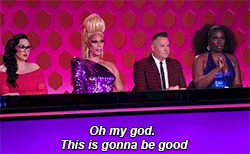
If you want to deep dive into quantitative and qualitative research, check out this LinkedIn article.
Why do you need to know all this?
Because these approaches are what researchers use for studying agenda-setting through social media.
And it's going to make the next part so much easier to understand and a lot more fun. So let's get into it.
Is Agenda-setting Relevant In the Age of Social media?
In the article, Agenda-setting in a social media age: Exploring new methodological approaches, Carolina Carazo-Barrantes question the role of traditional agenda-setting theory and study methods within our new social media-saturated world.

Carazo-Barrantes looked at the 2018 Costa Rica presidential election through the classic agenda-setting lens and beefed up their study using modern data mining and social network analysis (SNA).
And yes, I know those last two methods sound intimidating. But, to make a long story short, the researchers tapped into big data to understand social media users' habits and preferences online. Then they analyzed their relationships through social media to make a pretty and informative graphic like this one.

Image from article Agenda-setting in a social media age: Exploring new methodological approaches.
How did they get this information? Well, let me tell you.
First, Carazo-Barrantes analyzed the first and second rounds of Costa Rica's 2018 presidential election using the classic methodology of agenda-setting studies. That is, they identify each agenda (the media, politicians, and citizens) during the campaign and calculate correlations between them.
Next, they looked at the media's agenda throughout the electoral period. Here Carazo-Barrantes focused on media outlets that Costa Ricans felt were most reputable and had a significant reach on Facebook. The researcher tracked the posts from the news site's main webpage (manually) and those on their Facebook page (automatically using Netvizz software).
This allowed them to determine the media agenda.

The coolest part to me is that the Carazo-Barrantes used coding to track the news from these media outlets' websites and Facebook pages. They then organized the agendas under thematic categories like: corruption, education/culture, fiscal situation, and poverty/inequality.
Hint, there were way more categories, so if you want to see them all, check out the full article here.
With these codes, the Carazo-Barrantes was able to track Facebook users' interaction with media and candidates' posts, helping them to visualize the relationships between the agendas of the media, the public, and candidates.
So hats off to science, I guess.

At the end of the day, the Carazo-Barrantes found that social media didn't convey an agenda-setting effect. In today's world, there are multiple and different agendas across varying platforms, and these agendas can change at a dizzying rate (in less than 24 hours).
Social media has made the conversation on agenda-setting more complex. This study proved that the typical hierarchical nature of agenda-setting is less influential, and social media dilutes the effects.
How Do We Set Agendas on Social Media?
In another article, Agenda Selfying and Agendamelding: Advancing The Salience of the Self (I know, it's a mouthful), we get a different look at social media's impact on agenda-setting.
Like in the last article, Philemon Bantimaroudis questions whether traditional agenda-setting studies work in the social media era. But, instead of tracking agendas and social media users' responses, Bantimaroudis is focused on us.
Yep, just average everyday people looking for attention online.
Not that Bantimaroudis put it that way. He used the much more impressive and academic phrase personal salience — a.k.a the effort to make oneself important and noticeable.
You're welcome for that Word of the Day, by the way.

In their article, Bantimaroudis uses quantitative methods to make their point, referencing papers and polls to answer their questions. Here they look at social media users who have gained some prominence online —we usually call them influencers.
Whether they're big influencers or small, these people use social media and the communities they're a part of to set personal agendas. They can use a hybrid approach across social media platforms to achieve many different goals like getting more visibility, promotion, boosting their self-esteem, networking, achieving professional success, and so much more.
Pretty much anyone online can guess the motivations of influencers. But the world of social media makes this a more nuanced topic. Why? Well, because influencers aren't the only ones setting agendas online.
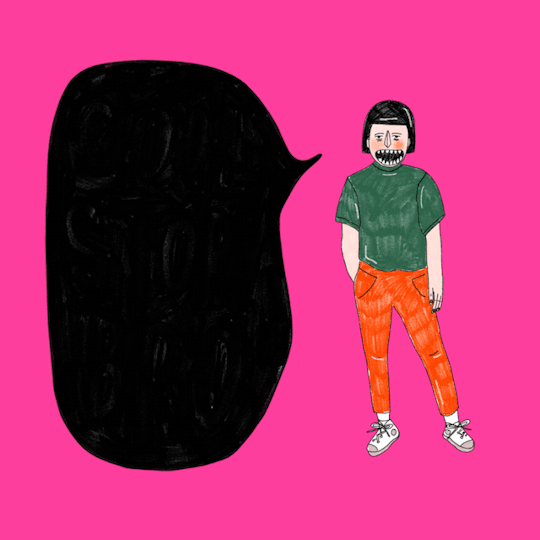
Even the average person has reason to make themselves seem more important online.
Many jobs check out applicants' online presence. We post selfies to make ourselves look good. (Even if you're not trying to rub someone's face into your glorious trip, you've got to admit, we're all posting the best photo we snapped). And we're all following, commenting, and liking posts to share our camaraderie with groups and influencers we like.
While your average person wouldn't think of this as agenda setting or, as Bantimaroudis puts it, agendamelding, this is how mass communication scholars see it.
Through their study, Bantimaroudis finds that social media provides more opportunities to seek personal salience and achieve personal and social significance. Influencers set agendas through their actions, and we subscribe to these agendas through our engagement.
How Research Helps Us
Each of these researchers uses different methods to share their findings with the world.
Carolina Carazo-Barrantes took advantage of big data and technology to track online habits and show the complex relationships between the agendas of the media, politicians, and the public. Philemon Bantimaroudis used polls and research papers to look at how the average person sets their own agenda online.
Through these methods, we see that traditional agenda-setting principles don't exactly fit the social media environment we find ourselves in.

Future researchers can adopt classic agenda-setting theories into new techniques that shed light on the contemporary questions we're asking ourselves today. Personally, I enjoyed Carazo-Barrantes' use of coding to map social media users' habits. It leaves less room for error, like those found in traditional polls, where humans tend to embellish or downplay their behaviors to fit social expectations.
As technology advances, we'll only consume and use more types of media. Research efforts will also need to continue to evolve if we hope to understand the importance of agenda-setting in our communities.
At least, that's what I got out of reading these research papers.
What about you? Let me know what you think in the comments below.
0 notes
Text
Caro leader. Su una recente “corrispondenza” politico-istituzionale
Il 15 agosto scorso un noto social media è stato il teatro di una “corrispondenza” tra il Presidente del Consiglio e il Ministro dell’Interno. L’ennesimo dimostrazione che la distinzione tra comunicazione istituzionale e politica, per chi si occupa dei fenomeni espressivi e di analisi delle ricezioni (di questi fenomeni), per essere effettuale deve spostarsi dalla mera constatazione del mittente (che marcherebbe, secondo una logica autoriale, il genere del messaggio) alla descrizione puntuale dei testi (secondo una logica, stavolta, strutturale). In questo senso, istituzionale e politico sono due modalità espressive, due risorse comunicative da usare a seconda degli effetti di realtà da produrre (almeno nelle intenzioni degli autori).
Su Facebook, il proprietario della pagina fan del Presidente del Consiglio ha pubblicato, dal 1/1/2019 a metà agosto, 577 post (con un picco massimo di 10 post in un giorno). Al momento dell’osservazione, quei post avevano generato (circa) 4.416.00 like, 820.000 commenti, 5.027.000 reazioni, 1.236.000 condivisioni.
L’unico post pubblicato il 15/08 (la “lettera”, in formato fototestuale) ha generato 254.000 like, 73.239 commenti, 283.000 reazioni, e 129.000 condivisioni. Ha l’engagement più alto dell’arco considerato. In ordine di interazioni prodotte, seguono la diretta da Palazzo Chigi dell’8 agosto, e poi, a sottolineare l’importanza corrente della dimensione pop nella comunicazione “politica”, un post a tema gastronomico (con a oggetto una pizza da lui preparata).


Sulla pagina fan del ministro dell’Interno, si contano, nello stesso arco temporale, 854 post (con un picco massimo di 20 post pubblicati in un solo giorno [il 10 agosto]). Al momento dell’osservazione, quei post avevano generato 14.939.000 like. 18.316.000 reazioni. 6.266.000 commenti. 2.518.000 condivisioni.
Il post del 15 agosto in risposta alla “lettera” del Presidente è uno dei 16 di giornata. In quel giorno, la pagina genera 424.337 like, 496.541 reazioni, 156.821 reazioni, e 65.201 condivisioni. Quel post raccoglie 91.935 like, 36.522 commenti, 105.434 reazioni, e 19.754 condivisioni. Ha dunque il tasso di engagement più alto della giornata, e di gran lunga, e l’ottavo del periodo oggetto di osservazione.
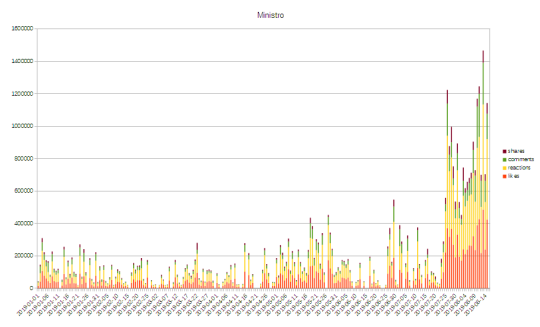
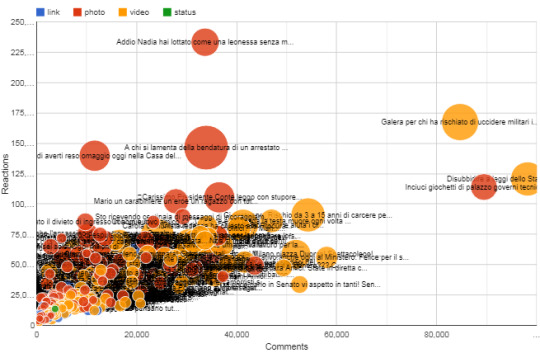
Se si osserva ciò che è accaduto su Twitter, si rileva che quel giorno l’account del Presidente non ha rilanciato la lettera. Il 15, l’account non ha per nulla twittato. Nell’arco considerato, si contano invece 228 tweet, che hanno generato quasi 375.000 like, più di 87.000 rt’s, e quasi 43.000 repliche. Non si nota l’uso di hashtag caratterizzanti. Il maggior numero di like (7.725) spetta a un post con un video accluso: si tratta di un minuto di partita a biliardo con l’ex primo ministro inglese. Lo stesso post ha generato anche il maggior numero di rt’s, 2.166. Fa ancora capolino la dimensione pop, dunque. Le parole non grammaticali più frequenti nei post danno (potenzialmente) conto di una modalità espressiva di tipo “istituzionale” (ma ciò andrebbe ovviamente verificato con un’analisi puntuale): governo, Italia, Paese.
L’account del ministro dell’Interno ha invece pubblicato, nel periodo oggetto di osservazione, 5.579 tweet. Quei post hanno generato 9.974.000 i like, 1.901.000 i rt’s, e 1.725.000 repliche.
Si nota qui l’uso di hashtag caratterizzanti. Nell’immagine che segue si possono adocchiare i più frequenti. L’uso costante di un hashtag auto-riferito marca un tentativo pervasivo di monitorare e dirottare la conversazione che ha se stesso come oggetto.

Il 15, l’account pubblica 25 tweet, che generano 73.776 like, 15.711 rt’s, e 18.621 repliche. Il tweet in oggetto è il settimo in ordine di like raccolti (3.721), il terzo in quanto a rt’s (1.084), il quarto in quanto a repliche (1.531).
Le parole non grammaticali più frequenti nei post sono molto interessanti (anche in questo caso, potenzialmente), e danno conto di due aspetti che modulano la prassi espressiva del Ministro, la funzione comunicativa perlopiù fatica di molti elementi di struttura, e la modalità enunciativa “politica” (marcata anche dal costante auto-riferimento, quel farsi metro di ciò che accade, che ha anche una funzione narrativa capitale): Salvini, Italia, italiani, amici, grazie.
Palmieri, nel suo Internet e comunicazione politica, ha paragonato Facebook al gazebo in piazza e Twitter a un incrocio tra ufficio stampa, agenzia di pubbliche relazioni e ufficio studi. In queste poche righe, appare già il differente movimento di due attori ugualmente istituzionali (seppur con differenze pregnanti) di fronte a questo ambiente informativo e comunicativo che si dice disintermediato, ma che è allo stesso tempo plasmato da una conversazione permanente generata a ben vedere da una doppia reintermediazione, delle piattaforme e dei legacy media: al primo livello si collocano le costrizioni “immediate” delle piattaforme con cui gli attori devono fare i conti; il portato del primo livello agisce poi a un secondo livello, nella duplice attività di priming e di framing, verso i legacy media “responsabili” della selezione dei contenuti.
La differenza di efficacia tra i due account è, da questo punto di vista, patente, ma se visti in ottica di framing, i recenti eventi danno al Presidente un ruolo inedito. Per la prima volta da qualche tempo a questa parte, il Ministro si trova a confrontarsi con un agonista (Opponente) dialetticamente poco conforme alla sua narrazione classica. Finisce così per ritrovarsi lui nella condizione non di Eroe, ma di Opponente. È soltanto un germe, destinato probabilmente a restare tale, ma che serba per ora la sua potenza simbolica. Vista in questa prospettiva, la “lettera” dà ricetto a molte linee di attacco; certo non è al momento semplice immaginare come far germogliare quel capitale semantico, e soprattutto chi potrebbe farsene interprete. A certe condizioni, gli (ex?) alleati del Ministro potrebbero trarne vantaggio, al termine (?) di una lunga stagione in cui si sono visti ancorare narrativamente a un ruolo ancillare, privi di un Opponente credibile (o temibile), o almeno meno credibile e temibile di quelli quotidianamente, e oculatamente (in vista di un “guadagno” tangibile), “sfidati” dal Ministro. Questa nuova possibilità, tra le altre, gli si para ora dinanzi, sempre che i Nostri non vengano subitaneamente subordinati al frame dei “responsabili”.
#semantics#communication#politics#comunicazione#politica#content strategy#osint#socialmedia#social listening#netvizz
0 notes
Photo

Debate sobre ciudadanía digital
Introducción a la vida profesional, Dr. Carmelo Cattafi
Se discute en grupo sobre la definición de ciudadanía digital y se usa Gephi para visualizar las redes de likes de páginas en Facebook relacionadas con el concepto de cosmopolitismo o ciudadanía digital/global.
Herramientas: Facebook, Netvizz, Gephi
Temas: Ciudadanía digital como concepto, cosmopolitismo, ciudadanía global
Habilidades fomentadas: Discusión y pensamiento crítico en torno a la ciudadanía digital y su traducción en redes sociales.
0 notes
Text
Blogpost 2 - class 15/09/20
First article: Tuters, M., de Keulenaar, E., Kisjes, I., Bach, D., & Beelen, K. (2019). The intellectualization of online hate speech: Monitoring the Alt-Right audience on YouTube. https://dev.clariah.nl/files/dh2019/boa/0768.html
Second article: Ben-David, A., & Matamoros-Fernández, A. (2016). Hate speech and covert discriminations on social media: Monitoring the Facebook pages of extreme-right political parties in Spain. International Journal of Communication, 10, 1167-1193.
The first article discusses the use of hate speech and extreme speech on YouTube. The data in this article consists of channel references, tags, video titles and all the comments made by individual users of YouTube on the right-wing YouTube channels. It could be argued that this article belongs to the Digital Humanities field because the subject of the article (and the objective of their research) belongs to the Humanities field, while the method they used for this research takes a digital approach.
The research looks into the potential problem of YouTube as a platform that normalizes political extremes. The researchers look at more than the obvious hate speech terms, that are characterized as a typical byproduct of the extreme-right. They also take into account pseudo-intellectual expressions. They hypothesize that commenters on YouTube moved from hate speech to extreme speech. The authors, furthermore, examine the audience over time to get an insight in the potential effects of the platform (how the beliefs and behaviours of the consumers shift as a result of the content that they engage with). They believe that this research calls for computational techniques sensible to the ambiguity of online hate speech. They gathered the data (video titles, channel references, tags and comments) using the YouTube Data Tool (/YouTube API).
The second article also discusses the use of hate speech on a social media platform, this time Facebook. It also considers the role of the platform’s policy and its technological affordances. The data that is analyzed here comes from the Facebook pages of seven extreme-right political parties and consists of text (words), images and links. The researchers aimed to examine the circulation of hate and discrimination on Facebook within the legitimate boundaries of the political discourse in Spain. This suits the humanities field. To conduct their research, they used digital tools and software (e.g. Netvizz), which is why it could be argued that this belongs to the digital humanities field. They argue that researchers should focus on practices and content as well as the specific features of the technology of social media, which contributes to their choice of using digital tools to conduct their research.
Both articles consider the social media platform as a potential problem for shaping an infrastructure for the circulation of subtle associations of hate and discrimination, even though both platforms officially prohibit explicit hate speech. However, the focus on content is different (the first article focuses mainly on the consumers whereas the second also takes into account the content of the pages itself and not only the content of the consumers of those pages). They both use API’s to gather their data but also use different methods and tools to conduct their research.
0 notes
Text
Facebook’s attitude towards researchers should worry you
Facebook’s attitude towards researchers should worry you
Facebook is closing its doors to researchers in the wake of the Cambridge Analytica scandal. The latest casualty is the app Netvizz, a research tool used by hundreds of academics to gather public Facebook data, that the social network has recently banned.
The app has gathered more than 300 academic citations and has been used to produce studies on everything from Norwegian political party…
View On WordPress
0 notes
Text
NGO Social Media Analysis - A Proposal
NGO Social Media Analysis – A Proposal
Alongside its growing popularity in the past years, social media has become an important tool of communication for organizations across industries thanks to its potential to democratize voice and facilitate participation, discourse and community formation (Macnamara & Zerfass, 2012, p. 287). In line with this trend, non-profit organizations, especially small-scale ones, have increasingly utilized…
View On WordPress
0 notes
Text
Digital Humanities #3 - vztahový striptýz
Jestli si myslíte, že sociální sítě a jejich zkoumání je devízou posledních několika let, jste na omylu. Jak jsem se dočetl, tak tento obor se začal formovat již v 70. - 80. letech minulého století v USA, kde bylo na základě analýz sociálních sítí například zkoumáno, jakým způsobem vyhledávají ženy lékaře, který by jim provedl potrat, nebo třeba jak si lidé hledají práci. Pomocí těchto analýz se zjišťovala příslušnost subjektů k nějaké sociální skupině, která se vyznačovala do jisté míry podobným vzorcem chování. Na základě těchto vzorců se navíc dá předpovědět, jak se v které situaci subjekt pravděpodobně zachová a možná i proto zažil tento obor boom v letech následujících.
V současné době jsou možnosti analýzy sociálních sítí již poměrně pokročilé a značně matematizované (využívajíc PC). Připočteme-li k tomuto i velké množství virtuálních přátelství na sociálních sítích typu Facebook (kde je už více jak 15% populace), nemůže nás napadnout jiná otázka než: Kdy jindy analyzovat sociální sítě (a vazby v nich), než právě teď?
Není tedy divu, že jsme i my, v další hodině Digital Humanities, do tohoto oboru zabrousili. S BIG DATY se už přeci skoro kamarádíme a FB API nás (doufám) již brzy bude zdravit pověstným "ahoj pyčo", tak proč to nezkusit. Co budeme potřebovat? Předně nějak TA data ze (svého) FB profilu stáhnout. Způsobů je několik, my jsme využili jeden z těch jednodušších, aplikaci Netvizz. Zde (poté co si jí povolíte) stačí kliknout na "here" na řádku "Step 2 - create a gdf file from your personal network by clicking - here". Po chvilce čekání si už můžete stáhnout svůj osobní GDF soubor. V něm jsou zaznamenány vazby mezi vámi a vašimi přáteli. A čím otevřeme GDF soubor? No třeba programem GEPHI. V něm si můžete "hrát" s vizualizací dat v souboru obsažených. Návody na to, jak si "hrát", jsou jednoduché a povaluje se jich na internetu mnoho. Nebudu zde tedy plácat játrama a raději vás odkážu na nějaké tutoriály. Jako základní zdroj vám postačí prezentace a odkazy ze stránek samotného programu.
Dat je na Facebooku mnoho, a tak raději upřesním, že jsme se rozhodli analyzovat osobní profil na základě přátelských vazeb. A jak tedy vypadá má sociální síť? Koukněte na obrázek (můžete si ho zobrazit i v plném rozlišení). V následujícím textu se jej pokusím popsat.

Tak a teď kdo je kdo. Začnu z levého horního rohu a půjdu (plus mínus) po směru hodinových ručiček.
zelená (nebo teda tyrkysová) - lidé z a okolo základky
oranžová (vpravo od zelené) - spolužáci Anet B.
žlutá - lidé ze střední školy
fialová (nad žlutou) - tři lidé, s kterými jsem seděl v komisi u voleb v roce 2010(?) na Praze 1
světle modrá - rodina a lidé s vazbou na rodinu
červená - lidé od filmu (zaměstnanci NFA, holky s kterejma jsem byl v Sokolově, lidé z K4)
tmavě modrá - ÚISK (+STUNOME)
světle zelená - lidé z letní knihovnické školy, kterou pořádal KISK
zelená (osamocená vlevo dole) - zaměstnanci Cinema City
růžová - holky s kterejma jsem se potkal v Rumunsku
8 dalších "sólo" skupin, které bych shrnul do jedné - to jsou lidé, které jsem potkal na různých akcích, či při různých jiných "speciálních" příležitostech (např. jsme měli společný tělocvik od FF UK :-D) a nemají žádné vazby na mé ostatní přátelé.
Velikost tečky (nodu) je dána hodnotout betweenness centrality (česky se to prý řekne mezilehlost :-D), která je výsledkem počtu nejkratších možných cest ze všech vrcholů do všech ostatních, které procházejí daným nodem (uzlem). Jednoduše řečeno, nejvyšší je hodnota tehdy, pokud cesty mezi libovolnýma dvěma uzlama sítě vždy procházejí tímto uzlem. A teď k detailům, které mě při pohledu na vizualizaci zaujaly:
Mými nejhlavnějšími uzly jsou Ivet H. (donedávna přítelkyně, logicky se zná s lidmi z většiny skupin), Aneta B. (ještě více bývalá přítelkyně, která navíc chodila na stejnou základku jako já), Jakub H. a Sandra H. (jediní lidé ze střední, s kterými se pravidelně vídám), velká je i Míša P., která má vazby na mou základku.
Překvapilo mě, jak malá a poměrně stranou je Kristýna L. (jediný člověk ze základky, s kterým se pravidelně vídám).
Dále mě zaujala pozice Sandry H., která se mnou chodila na střední (do vedlejší třídy), ale zároveň nyní studuje na stejném VŠ oboru, jako kolegyně z NFA (Filmová studia). To, že je spíše červená než žlutá, bude následek toho, že jsem se na střední bavil z její třídy vždy jen s ní, a tak nevzniklo moc dalších vazeb a vazby z Filmové skupiny jednoduše přepraly ty ze Střední.
Zajímavé je i prostředí mezi Anetou B. a Davidem Hawaiiem H. S oběma jsem se vídal na hokeji na Spartě a lidé mezi nimi jsou známí právě z holešovické arény a společných sparťanských akcí.
Na skupině ÚISKu mě nejvíce zaujalo rozdělení na KNIHOVNÍKY (tedy povětšinou mé kolegy ze třídy) a na STUNOMÁKY, které znám z předmětů Studií nových médií, které rád navštěvuji. Středobodem této skupiny je Marie K., která rok studovala s námi a rok na STUNOME. Dál je zajímavá pozice Pavla S., který už má, alespoň dle konexí, značně nakročeno na STUNOME ;).
Ve skupině z Letní knihovnické školy se mísí lidé z brněnského KISKU s letošními druháky ÚISKu, kteří na letní škole byli, proto jsou i tyto skupiny blízko sebe.
Skupiny Cinema City, Rumunsko a "sólo" skupiny byly ve skutečnosti ještě více separovány od ostatních skupin, pro přehlednost (a velikost) obrázku jsem je přetáhl blíže.
Z obrázku by se dalo vyčíst i daleko více. Myslím si ale, že těchto pár zajímavostí stačí. Ještě si dovolím přiložit jeden obrázek a to je koncentrace pohlaví. Z něj je pěkně vidět, jak jsme byli na střední škole třída plná kluků. Narušuje jí jen Zuzka K., učitelka matematiky a Adéla T. přítelkyně jednoho ze spolužáků. Další dvě holky na okraji jsou zase kamarádky Jakuba H. :).
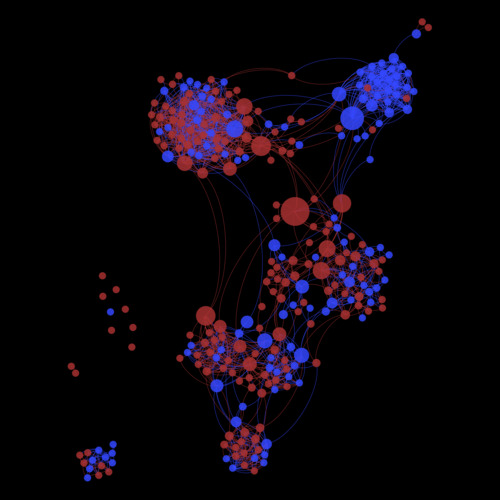
Doufám, že se vám můj vztahový striptýz, ve kterém jsem na sebe možná odhalil více, než jsem chtěl, líbil. V jednom z příštích blogpostů se pokusím shrnout vztahy 5 FB stránek (resp. toho co lajkují). Konkrétně jsem si vybral 5 kin.
0 notes
Photo

Portafolio de herramientas de análisis sociológico de la violencia de género en México
Sociología, Dra. Eloisa Heredia
Se visualizan y analizan las páginas de Facebook y Gephi como parte de un portafolio de análisis sociológico (hemerográfico, documental, de colección de datos en focus group) para realizar una propuesta sobre la violencia de género.
Herramientas: Netvizz, NodeXL, Gephi
Temas: Violencia de género, desigualdad laboral, salud mental, universidades, redes locales atendiendo el tema de violencia de género en el estado y el país.
Habilidades fomentadas: Uso de análisis de redes sociales para conseguir información sobre la infraestructura local y para facilitar contacto y entrevistas.
0 notes